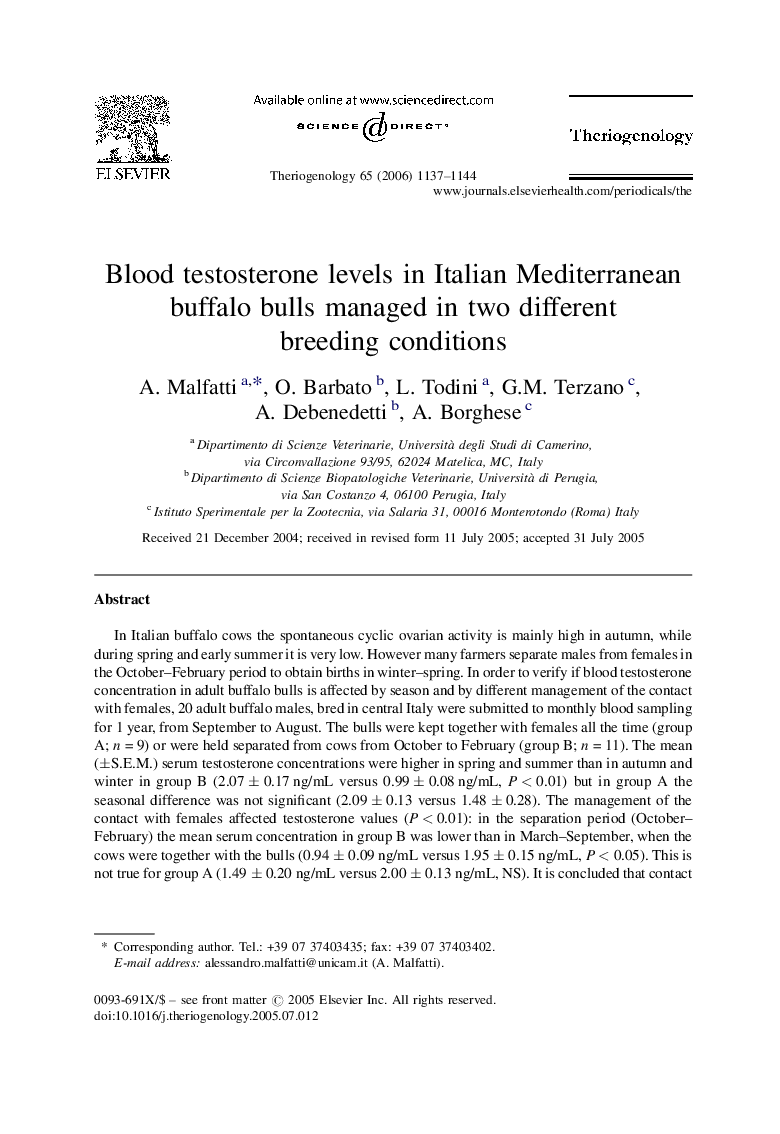| Article ID | Journal | Published Year | Pages | File Type |
|---|---|---|---|---|
| 2097192 | Theriogenology | 2006 | 8 Pages |
In Italian buffalo cows the spontaneous cyclic ovarian activity is mainly high in autumn, while during spring and early summer it is very low. However many farmers separate males from females in the October–February period to obtain births in winter–spring. In order to verify if blood testosterone concentration in adult buffalo bulls is affected by season and by different management of the contact with females, 20 adult buffalo males, bred in central Italy were submitted to monthly blood sampling for 1 year, from September to August. The bulls were kept together with females all the time (group A; n = 9) or were held separated from cows from October to February (group B; n = 11). The mean (±S.E.M.) serum testosterone concentrations were higher in spring and summer than in autumn and winter in group B (2.07 ± 0.17 ng/mL versus 0.99 ± 0.08 ng/mL, P < 0.01) but in group A the seasonal difference was not significant (2.09 ± 0.13 versus 1.48 ± 0.28). The management of the contact with females affected testosterone values (P < 0.01): in the separation period (October–February) the mean serum concentration in group B was lower than in March–September, when the cows were together with the bulls (0.94 ± 0.09 ng/mL versus 1.95 ± 0.15 ng/mL, P < 0.05). This is not true for group A (1.49 ± 0.20 ng/mL versus 2.00 ± 0.13 ng/mL, NS). It is concluded that contact with females exerted a major stimulus for the testicular androgen secretion in buffalo bulls, even if other seasonal factors (climate, food intake) may affect control of gonadal activity.
